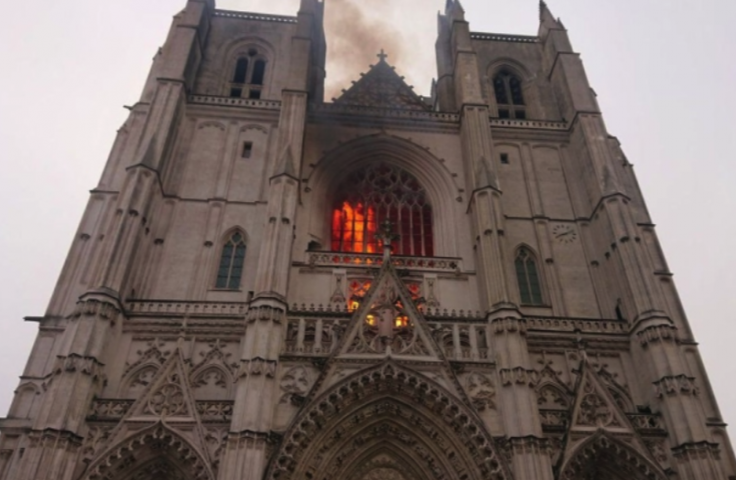A Rwandan refugee who volunteered as a warden at France's 15th-century cathedral in Nantes has admitted to starting the fire that caused severe damage to the historic monument a week ago, according to his lawyer.
"My client has cooperated," lawyer Quentin Chabert said on Sunday, without elaborating on motives for attempting to burn down the Cathedral of Saint Peter and Saint Paul. "He bitterly regrets his actions ... My client is consumed with remorse," Chabert said.
Act of Arson

The 39-year-old, an asylum seeker from Rwanda who has lived in France for several years, was arrested earlier after prosecutors opened an arson inquiry in the wake of the early morning fire on July 18 after learning that the fire had broken out in three different locations inside the church, which the volunteer had locked up the night before.
He was later released from custody without charge with the cathedral's rector saying: "I trust him like I trust al the helpers." He was re-arrested on Saturday following his confession.
Facing 10 Years in Prison
But Nantes prosecutor Pierre Sennes said in a statement the man has been charged with "destruction and damage by fire" and faces up to 10 years in prison in addition to a 150,000 euros ($175,000) fine. Sennes said the man admitted to setting three separate fires in the cathedral: at the main organ, the smaller organ, and the electrical panel.
Cathedral's 17th Century Organ Destroyed
The fire took place 15 months after the devastating fire at the Notre-Dame cathedral in Paris, which raise questions about the security risks for other historic churches across France.
Although firefighters were able to contain the Nantes cathedral fire within just two hours and save the cathedral's main structure, its famed organ, which dated back to 1621, and had survived the French Revolution and World War II bombardment, was destroyed. Other priceless artefacts and paintings were also gutted in the blaze, including a work by the 19th-century artist Hippolyte Flandrin and stained glass windows that contained remnants of 16th-century glass.









